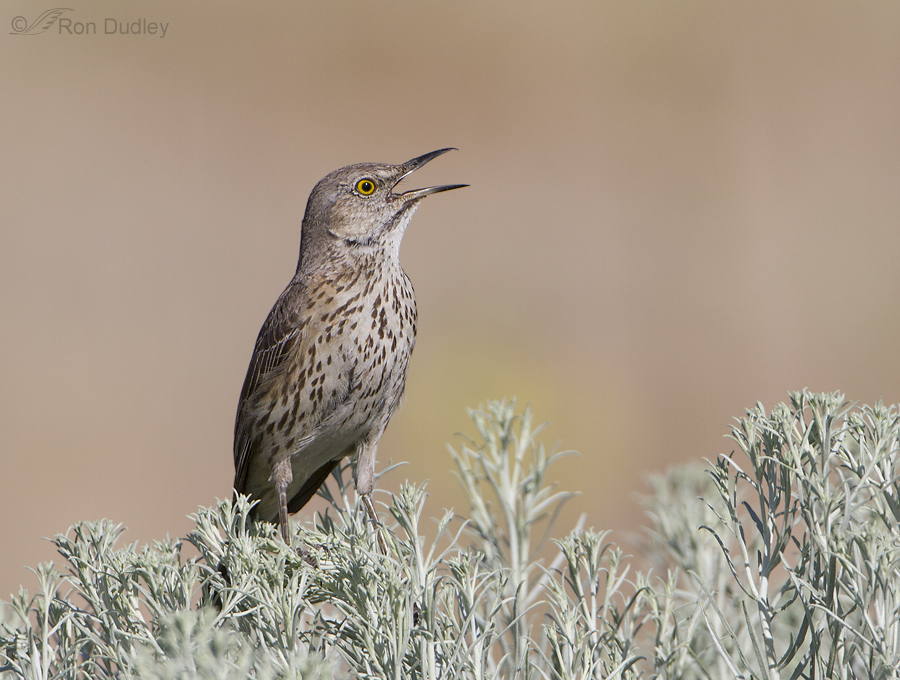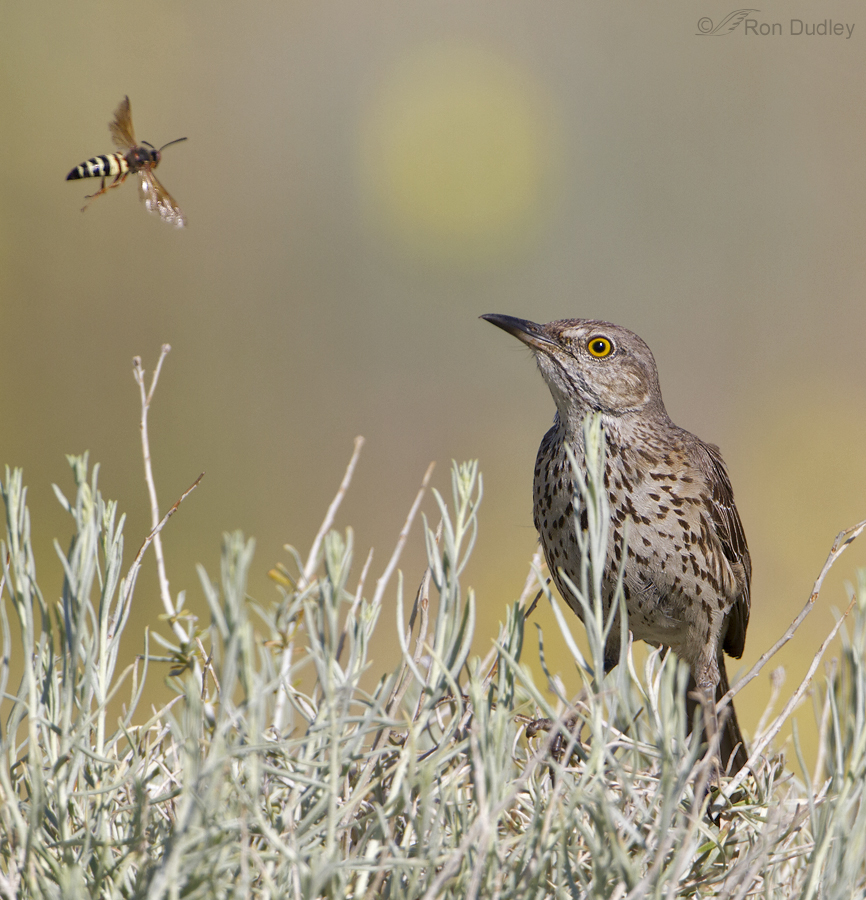Yesterday morning I was once again able to find a cooperative Sage Thrasher singing on territory. And this time the bird treated me to an impressive display of its marathon singing ability.
1/2500, f/7.1/ ISO 500, 500 f/4, 1.4 tc, natural light
In a previous post about Sage Thrashers I noted the tendency of the species to sing in long, uninterrupted bouts of several minutes. I’ve seldom heard them sing from close up because they’re so elusive when I approach but this bird chose to disavow that tendency and sang uninterrupted and enthusiastically for perhaps 3 minutes while it was perched quite near to me. Their songs appear to function in both mate attraction and maintenance of territory and I suspect that this display may have been for the benefit of another male thrasher in the area.
Like mockingbirds, Sage Thrashers are mimics of the songs of other species, particularly the Western Meadowlark, Brewer’s Sparrow and Horned Lark. Interspersed into the other notes of its song, this bird very distinctly mimicked the alarm call of the Willet. Willets are common residents of Antelope Island in spring and summer and their calls are commonly heard on the island, especially during nesting season.
1/2500, f/7.1/ ISO 500, 500 f/4, 1.4 tc, natural light
But the best fun of the morning was provided by this wasp as it unexpectedly intruded on the personal space of the thrasher. The gaze of the bird locked on to the wasp like radar. During summer Sage Thrashers are primarily insect eaters but I don’t know if the birds intense interest in the wasp was because of the potential meal it might provide or for fear of being stung. In the end the thrasher made no attempt at snagging the wasp out of the air and the insect continued on its way.
I’ve had two close encounters with this elusive species in recent days. One just never knows when bad luck is going to change for the better.
Ron




Who is going to get whom? Tack sharp!
nice ones Ron! I love the wasp. I have been working hard in sagebrush country this summer with these as one of my top targets, but with very little success. Until this morning–I finally got some keepers of this cool and secretive species!
Fantastic captures, love it!
Sharp as a tack! I love the focus of the thrasher in the second image. Content, as in the drama of the second image, ads so much.
As always, great photographs.
Love these photos. At the risk of anthropomorphizing, it occurs to me that maybe the thrasher didn’t like its singing interrupted by the buzzing of the wasp? Probably not, but it seemed like a fun idea. That photo is wonderful!
I am wary of wasps too. Another beautiful bird. Thank you for the song link – which sent one of my cats into a frenzy and made me smile broadly.
Thanks for the song link…will try it. I really like the soft yellow blurs of the mullein.
What wonderful shots! Thanks for sharing them!
Charlotte
LOVE these shots…esp. the second frame…composition, with the rabbit brush (or is that female sage?), the soft yellow blur of Mullein(?), and intense focus of the bird on the wasp…wish I could hear that bird sing!…Even recorded.
Thank you, Patty. You’re right – the yellows are mullein. It’s hard to take a photo on the island right now without the yellow mullein in the background.
The perch is rabbit brush. Sage Thrashers prefer sage habitats but most of my photos show them on rabbitbrush because it’s a disturbance species that often grows on the edge of the road and I shoot from my pickup. But there’s nearly always sagebrush right behind the rabbit brush.
Here’s a link to the song of the Sage Thrasher (though it doesn’t include the mimicked Willet alarm call that I mentioned in my post) http://www.allaboutbirds.org/guide/Sage_Thrasher/sounds